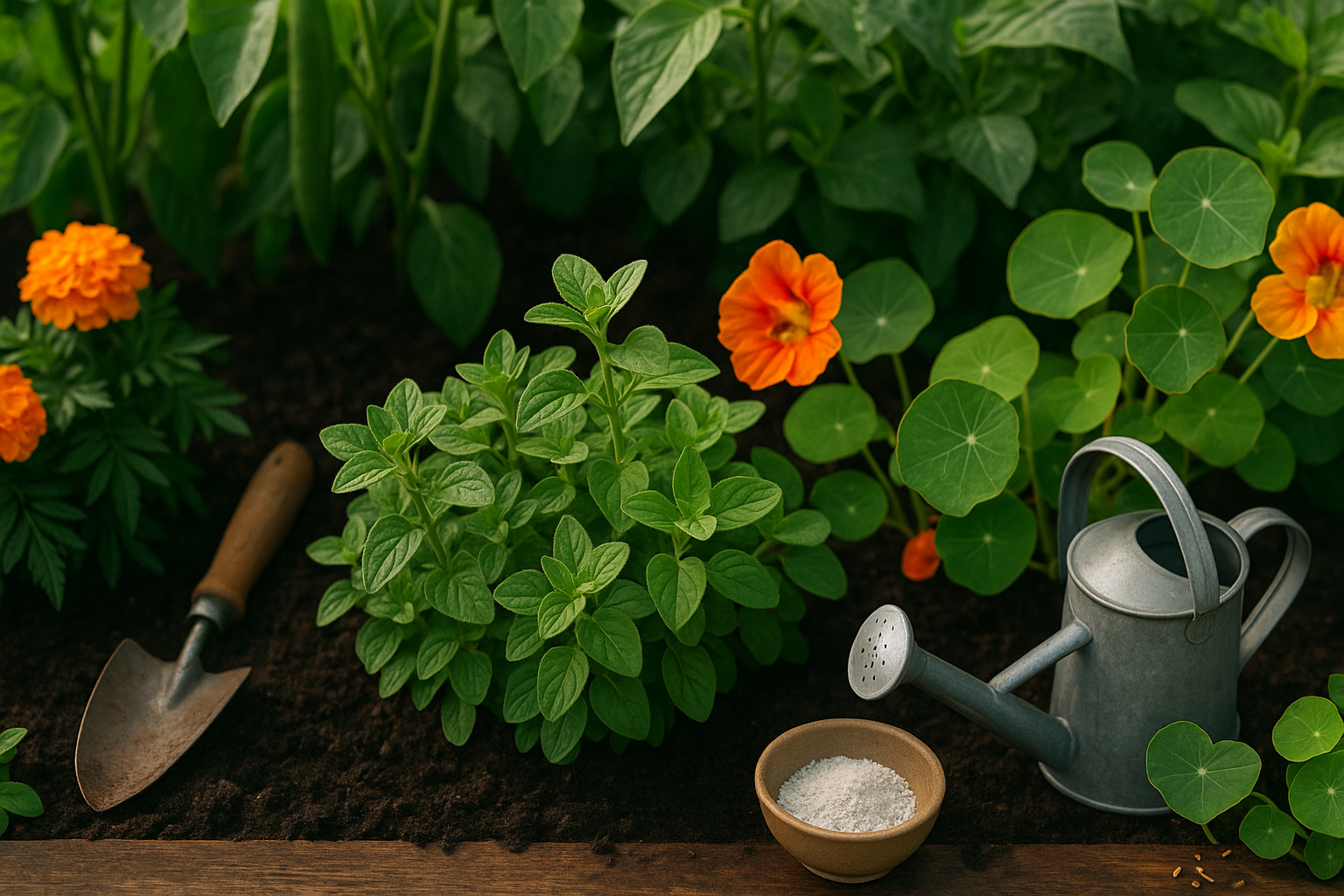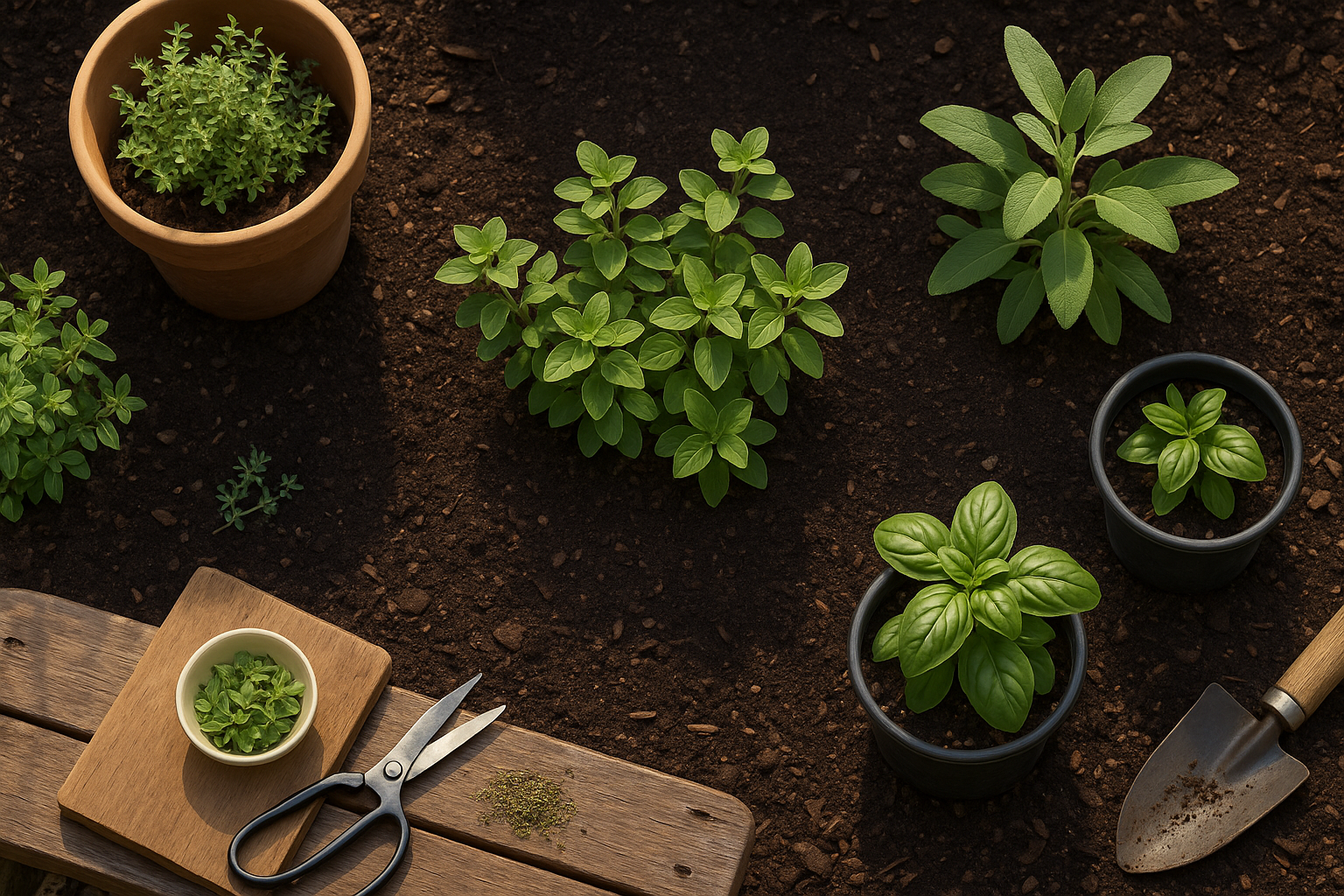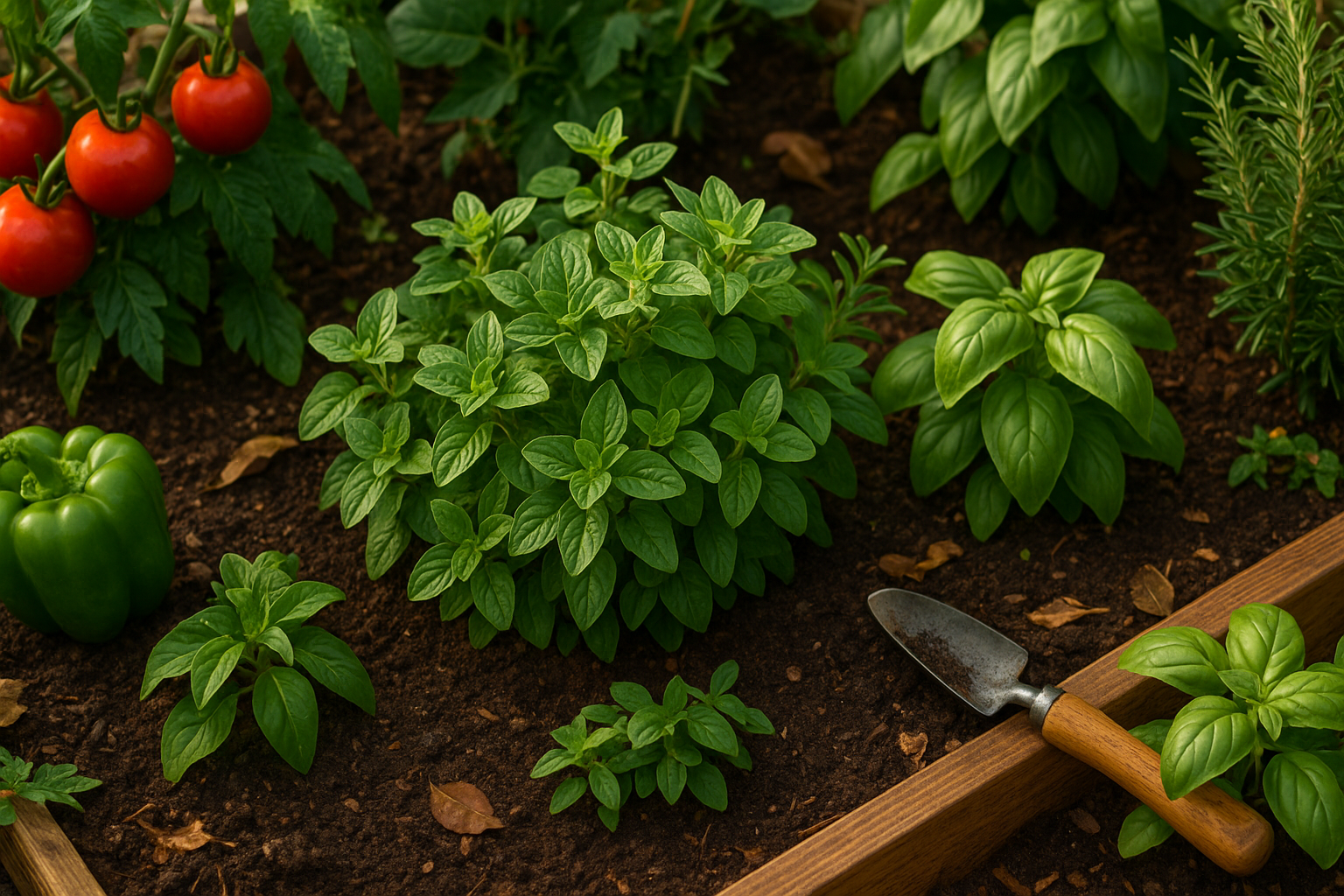The Best Companion Plants for Oregano

Pairing oregano with the right companion plants can boost your garden’s health and harvest. Oregano naturally deters pests like aphids and cabbage moths, making it a fantastic partner for vegetables such as tomatoes, peppers, and broccoli.
It also grows well alongside bush beans, as both share similar soil and sunlight needs. For best results, give oregano some space—its sprawling habit can crowd out smaller herbs.
Gardeners often plant oregano at the edges of raised beds or in pots near vegetable rows for easy access and pest control. Mixing in marigolds or nasturtiums nearby can intensify the protective benefits, creating a vibrant and resilient garden ecosystem.
Introduction to Oregano Companion Planting
Oregano companion plants can transform your garden by boosting the health and productivity of this aromatic herb and its neighbors. Companion planting—a time-tested gardening technique—involves growing different plants together so they can support and protect each other.
For herbs like oregano, companion planting is especially beneficial because oregano naturally wards off common pests with its pungent aroma, acting as a green shield for more vulnerable crops nearby. Not only is oregano low-maintenance and drought-tolerant, but it also serves as attractive groundcover, helping to suppress weeds and improve soil health.
In this post, we’ll dive into the best oregano companion plants, from flavorful veggies like tomatoes and peppers to flowering allies that attract helpful pollinators. You’ll learn which combinations create a thriving garden ecosystem and which pairings to avoid—such as plant neighbors that compete for nutrients or spread disease.
Alongside these practical tips, we’ll include real-world advice on planting layout, sunlight needs, and easy care routines, so you can get the most out of your oregano patch. Whether you’re a new gardener or a seasoned green thumb, read on for simple, science-backed ways to make oregano and its companions flourish together.
Top Companion Plants for Oregano
Oregano shines as a companion plant because it offers both pest control and flavor benefits to its garden neighbors. Pairing oregano with basil, for instance, creates a synergy where both herbs help repel aphids and mosquitoes while enhancing each other’s flavors—perfect for Italian dishes straight from the garden.
Chives also make a smart match; their mild onion scent, when grown beside oregano, deters insect pests and attracts pollinators, resulting in healthier, more robust herbs. Rosemary and oregano thrive side by side in full sun, with rosemary’s woody stems providing some shelter from the wind and oregano’s ground-hugging habit helping to keep the soil cool and moist.
When planted near tomatoes, oregano acts as a living mulch and natural pest deterrent, warding off sap-sucking insects like whiteflies and boosting tomato flavor—a classic partnership for both garden and kitchen. Peppers benefit from oregano’s pest-repelling oils, and in return, the taller growth of pepper plants offers partial shade, protecting oregano from harsh midday sun.
Sage and oregano share similar soil and watering preferences, and planted together, they help repel carrot flies, cabbage moths, and beetles, making them a powerful duo for kitchen gardens. Thyme and oregano are Mediterranean cousins; their combined aromatic presence confuses harmful insects and creates a robust, flavorful herb patch perfect for seasoning everything from poultry to roasted vegetables.
Marjoram also pairs well with oregano, reciprocating with enhanced aromatic oils that benefit both herbs’ growth and resilience. If you’re short on outdoor space, try oregano with chives or thyme in a container—these herbs have similar cultural needs, and their combined scents will keep patio pests at bay while offering a continual harvest for home cooking.
By pairing oregano with these thoughtful companions, you’ll see healthier plants, enjoy naturally lower pest pressures, and even boost the taste of your favorite garden-fresh meals.
Plants to Avoid Near Oregano
When planning your herb or vegetable garden, it’s smart to pay attention to which plants should not be grown near oregano. Oregano is a robust and aromatic herb, but it doesn’t always play nicely with every neighbor.
For instance, cucumbers are sensitive to strong-scented herbs like oregano. The oils released by oregano can interfere with cucumber growth, making your cukes less productive and more vulnerable to pests.
Another incompatible companion is fennel, which is notorious for being allelopathic—meaning it releases chemicals from its roots that can inhibit the growth of many nearby plants, including oregano. Planting fennel near oregano can result in stunted plants and poor yields for both.
Oregano also prefers somewhat dry, well-drained soil and can spread quickly, competing aggressively for light, space, and nutrients. Root crops like potatoes or onions can struggle if planted too close, as oregano’s vigorous growth may crowd them out.
If you want to grow these sensitive veggies, locate them on the opposite end of your garden bed or use raised beds to create physical separation. For fennel, it’s best to dedicate a separate container or isolated patch well away from other herbs and vegetables.
Similarly, cucumbers thrive with more neutral neighbors such as beans or lettuce instead of aromatic herbs.
Thoughtful garden planning, including grouping oregano with other Mediterranean herbs like thyme and rosemary, helps prevent competition and allelopathic problems. This strategy not only keeps incompatible plants apart but also ensures everything in your garden gets the resources it needs to grow healthy and strong.
Benefits of Planting Oregano with Companions
Planting oregano alongside other garden crops offers a wealth of benefits, making it a smart choice for gardeners seeking healthier, more productive beds. Oregano’s signature aromatic oils act as natural insect deterrents; simply having oregano near plants like tomatoes and peppers helps repel pests such as aphids and cabbage moths without relying on chemical sprays.
Gardeners often report fewer infestations and more vigorous produce when oregano is present. This herb also attracts beneficial pollinators—bees and butterflies love its tiny white or pink blossoms—so nearby vegetables and fruits benefit from better pollination and higher yields.
Oregano’s bushy, spreading growth acts as a living mulch, suppressing weeds and keeping soil moist for delicate seedlings. For example, in a mixed herb-and-vegetable patch, a border of oregano can slow weed growth along paths and between rows.
There’s also evidence that oregano improves the flavor of crops grown nearby: home growers often say their brassicas, especially cabbage, taste richer when oregano shares the plot. This is likely due to subtle interactions in soil chemistry and microclimate.
These companion benefits don’t just boost individual plants—they encourage a balanced, resilient mini-ecosystem that is less prone to outbreaks and stress. Many community gardens and small farms use oregano in companion planting to sustainably manage pests and promote biodiversity, reducing labor and inputs year after year.
With its tough, low-maintenance nature and powerful protective traits, oregano is a “secret weapon” that fits seamlessly into organic gardening strategies—delivering better harvests and less work for growers of all experience levels.
Practical Tips for Successful Oregano Companion Planting

Achieving successful oregano companion planting starts with getting the basics right—spacing, watering, and sunlight are crucial for healthy growth and thriving combinations. Oregano needs 12–18 inches of space from its neighbors to allow airflow and prevent overcrowding, whether you’re planting in-ground beds or roomy containers.
Group oregano with companions that enjoy similar conditions, such as tomatoes, peppers, and basil, which all appreciate well-drained soil and at least 6 hours of direct sunlight. For garden borders, pair oregano with sage, thyme, or marigolds to deter pests and create a fragrant, attractive edge.
When using containers, make sure they have drainage holes and avoid crowding with too many plants; two or three herbs per medium pot is usually ideal. Water oregano and its companions consistently, but don’t overwater—let the soil dry a bit between waterings, especially in cooler, wetter climates like the UK.
In hotter, drier areas such as the southern US, mulch around plants to retain moisture and reduce heat stress. Watch out for the common mistake of planting oregano with thirsty herbs like mint or parsley, which prefer richer, damper soil—keep those apart. Also, overcrowding can lead to fungal issues, so don’t squeeze oregano between fast-spreading vegetables or large-leafed plants.
If you’re in a region with short summers, like northern England or the Pacific Northwest, use raised beds or dark containers to warm the soil and lengthen the growing season. Meanwhile, gardeners in hot, sunny areas might benefit from providing oregano with partial afternoon shade during peak heatwaves.
Ultimately, healthy oregano companion planting is about matching needs and staying attentive—monitor conditions, adjust spacing if plants get crowded, and refresh water and mulch practices as the seasons and climate change.
Frequently Asked Questions (FAQs)
Many gardeners wonder if oregano is a good companion for tomatoes, and the answer is a resounding yes! Oregano repels pests like aphids and can help boost the flavor and health of tomato plants when grown nearby.
Another common question is how oregano grows—oregano is a low-growing, spreading herb that can act as a living mulch, conserving soil moisture and suppressing weeds. However, it’s important to note that oregano can spread rapidly, so give it some room or consider planting it in a container sunk into the ground.
Gardeners often ask about spacing: for companion planting, space oregano about 8-12 inches away from your other garden vegetables to allow both plants enough airflow and room to thrive. If you’re planting oregano near more delicate herbs, like basil, keep in mind oregano’s bushy nature could crowd them out, so plant those at the garden edge or in separate pots.
Finally, many gardeners want to know if oregano pairs well with all vegetables—generally, it’s great with tomatoes, peppers, beans, and brassicas, but avoid planting it too close to moisture-loving herbs like cilantro or parsley, as oregano prefers drier conditions.
